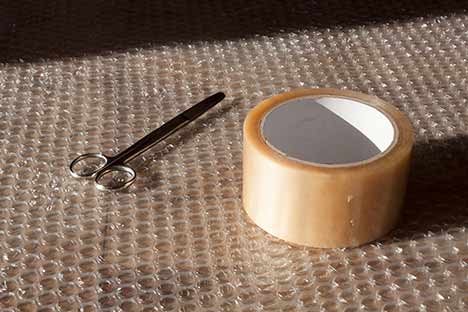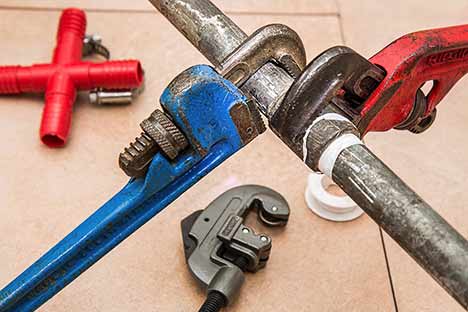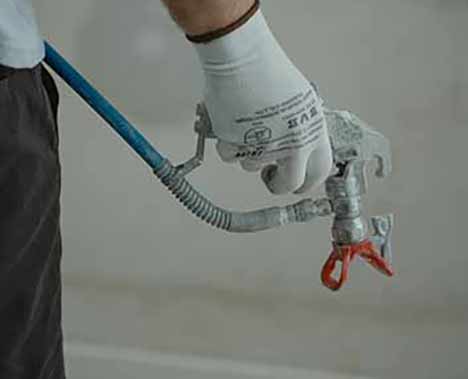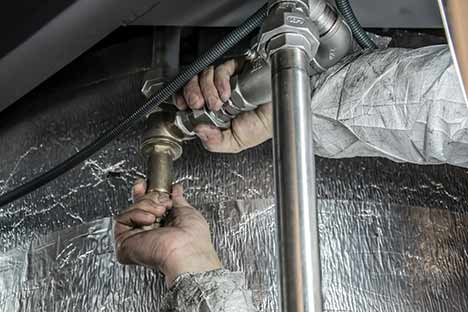Plumbing leaks can be a frustrating and potentially costly problem for homeowners. While it is always recommended to call a professional plumber to repair any leaks, some temporary fixes can be done to minimize damage and prevent further leaks. This article will discuss several methods to temporarily fix a plumbing leak.
Shut off the water supply
The first step in addressing a plumbing leak is to shut off the water supply to the affected area. This can be done by turning off the main water valve for your home or by shutting off the valve for the area where the leak occurs.
Identify the source of the leak
The next step is to identify the source of the leak. This can be done by visually inspecting the pipes or by using a leak detection tool. Once the source of the leak has been identified, you can determine the best method for temporarily fixing the problem.
Use a pipe clamp
One of the easiest ways to temporarily fix a leak is by using a pipe clamp. Pipe clamps are available at most hardware stores and can be used to seal small leaks in pipes. Simply place the clamp over the leak area and tighten the screws to create a tight seal.
Apply epoxy putty
Epoxy putty is another temporary fix for plumbing leaks. This putty can be molded into the shape of the leak and then allowed to dry. Once the putty is dry, it will create a seal that will prevent further leaks.
Use duct tape
While duct tape should not be used as a long-term fix for plumbing leaks, it can be used as a temporary solution. Simply wrap the tape tightly around the area where the leak is occurring. Be sure to use enough tape to create a tight seal.

Duct tape is a good quick fix
Apply a rubber patch
If the leak occurs in a larger area, a rubber patch can be used to fix the problem temporarily. These patches are available at most hardware stores and can be applied over the leak to create a tight seal.
Use a compression fitting
Compression fittings can be used to fix leaks in copper pipes. These fittings are available at most hardware stores and can be used to create a tight seal over the leak.
Tighten loose connections
Sometimes, plumbing leaks are caused by loose connections. In these cases, simply tightening the connection may be enough to stop the leak. Use a wrench to tighten the connection, and be sure to check for leaks again after tightening.
Use a hose clamp
Hose clamps can be used to fix leaks in hoses temporarily. Simply place the clamp over the area where the leak occurs and tighten it to create a tight seal.
Replace damaged parts
If the leak is caused by a damaged or worn-out part, such as a washer or gasket, it may be necessary to replace the part. These parts can be purchased at most hardware stores and are relatively easy to replace.
A quick tip before we continue
If you are moving into a new home or apartment, experts at Here & Now Movers advise inspecting the plumbing for any potential leaks or issues. This can help you avoid costly repairs and ensure your move goes smoothly. During the inspection, check the pipes, faucets, and appliances for any signs of leaks or damage. This can include water stains, mold, or musty odors.
It is also a good idea to ask the previous owner or landlord if they have experienced any plumbing issues in the past. By taking these steps, you can quickly catch any potential problems and avoid unexpected issues during your move. Additionally, if you notice any leaks or issues, be sure to address them before moving in to prevent further damage or issues down the line.

Inspecting a house before buying it is important
Once you have successfully applied one of the temporary fixes listed above, it is important to closely monitor the affected area for any signs of further leaks. Keep an eye on the repaired area and check for any signs of water or moisture. If you notice any new leaks, you may need to apply another temporary fix or contact a professional plumber for a more permanent solution.
It is also important to remember that while these temporary fixes can provide a quick solution, they are not permanent. In some cases, the only way to completely fix a plumbing leak is by replacing the damaged pipe or fitting.
Keep in mind
While temporary fixes can provide a quick solution for plumbing leaks, it is always recommended to contact a professional plumber for a more permanent fix. These temporary fixes can minimize damage and prevent further leaks but are not long-term solutions. By taking preventative measures and staying vigilant, you can avoid plumbing leaks and keep your pipes in good working condition.

Professionals can provide a permanent fix
Avoid the leaks
In addition to temporary fixes, there are some preventative measures you can take to avoid plumbing leaks in the future. Regularly inspect your pipes and fittings for any signs of damage or wear, and replace any worn or damaged parts as soon as possible. Keep an eye on your water pressure, as high pressure can put extra strain on your pipes and increase the likelihood of leaks.
Another important preventative measure is to be mindful of what you flush down your drains. Avoid putting grease, oil, or other materials down your drains that can clog your pipes and cause damage. Regularly clean your drains and use a drain screen to prevent debris from entering your pipes.
In conclusion
Plumbing leaks can be a frustrating problem for homeowners. While it is always recommended to call a professional plumber to detect and fix leaks, some temporary fixes can be done to minimize damage and prevent further leaks. By following the tips outlined in this article, you can temporarily fix a plumbing leak until a professional plumber can address the problem.
